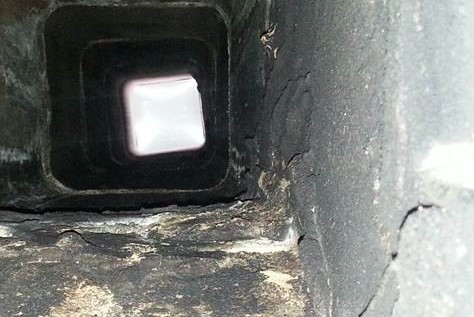When buying or selling a home for the first time, homeowners often look to understand their potential risk exposure on a purchase or sell. While the seller is most likely hoping to keep costs to a minimum, if the condition of the home does not meet or exceed the expectations of potential buyers, the seller might have a tough time selling their home at a desired price. Even though sellers often have the bargaining advantage in the home-selling process, it can still be difficult to finalize a sale if there are many problems left unfixed.
In order to ensure all issues are resolved, it is important to have every part of the house inspected — and that includes the chimney. For those that own a home with a fireplace and chimney, or are looking to purchase a property that does, it’s important to know that the chimney is a complex and unique system that needs thorough attention from a fireplace professional who can access areas a typical visual inspection cannot cover.
Why is A Chimney Sweep Inspection a Value-Added Inspection?
When a product or service is “value-added,” it entails the increased value that is given before selling to customers. Home inspections can be see as value-added inspections because they prevent purchasing agreements from falling apart. This is because a home inspector outlines for the homeowner what work needs to be completed, which can thereby help add value to their home and incentivize closing the purchase to potential buyers. A professional fireplace inspection is a “value-added” because it provides information above and beyond that if a typical visual inspection.
When getting your home inspected before selling, it is important to make sure that every component of the home is examined to ensure it is working properly. This is so that you can have any issues repaired, or let the buyer know what repairs are needed.
Chimney inspections are often completed with special tools that most building or home inspectors do not carry or use and can reveal a variety of problems that need immediate attention, such as cracks in your home’s masonry, damage the fireplace liner which can be expensive to repair, water-damage, or even issues with your chimney system that can be potential fire hazards. Also, inspections can help add value to chimney/fireplaces by maintaining and increasing their lifespan. Some other important things that might be caught by a chimney inspection, include:
- Water entry
- Damage liner
- Draw Issues
- Missing parge coat
- Damaged caps
- Other issues that could affect long-term effectiveness, or even the safety of the residents
The Next Step When a More Comprehensive Inspection is Recommended
When it comes to inspecting a chimney, oftentimes, calling in a chimney company is all that is required. However, there are circumstances where an engineer should be involved to determine the current state of the chimney and surrounding structure. Furthermore, an engineer can provide essential insight into the overall scope of work required when chimney repair is determined to be necessary and to help coordinate work so that it can be comprehensive and completed safely.
How To Find The Professionals To Meet Your Needs
Buying or selling a home requires relying on local, trusted professionals to ensure the process goes as smoothly and free of stress as possible. Especially if the home has a chimney and fireplace, it is essential that these components are in working order before the house is bought or sold. Considering the complexity of the chimney system, be sure to hire a chimney company you can be confident will thoroughly and properly inspect your chimney. This company should also be trusted to loop in the necessary experts, like an engineer, if the structural condition of the chimney extends beyond their expertise or needs the second opinion of a trusted engineering professional.
Written by: Lee Roff, Owner of Lords Chimney, a CSIA- and NFI-certified chimney company based in Houston. Lords Chimney was founded in 2003.


Recent Comments